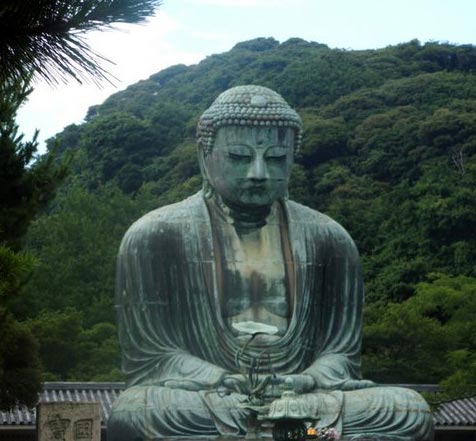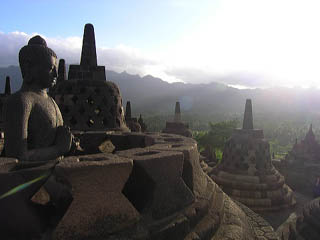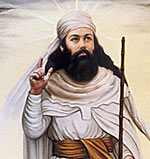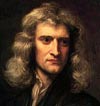Siddhartha, who later became known as the Buddha – or The Enlightened One – was a prince who forsook the comforts of a palace to seek enlightenment. He realised the essential unreality of the world and experienced the bliss of Nirvana. After his enlightenment, he spent the remainder of his life teaching others how to escape the endless cycle of birth and death.

Daibutsu Buddha Kamakura, Japan
Buddha was born approximately 400 BCE in the district of Lumbini, which is now modern-day Nepal, close to the Indian border. He was brought up in a palace with all the comforts and luxuries possible. Growing up a young noble prince, it is said his father sought to shield the young prince Siddhartha from the pain and suffering of the world. It is said his father had a premonition that Siddhartha would one day renounce the world.
However, at one point in his early adult life, Siddhartha sought to find a greater meaning to life. In disguise, he left the palace and wandered around the kingdom. Here, Siddhartha came across different people suffering from old age and illness and witnessed death. This showed him the transitory nature of life, which had a great impact on him. As a consequence, Siddhartha resolved to seek a deeper meaning of life.
Secretly, Siddhartha left the palace – leaving behind his wife, son and all the worldly comforts that he had enjoyed. He devoted himself to meditation, seeking enlightenment amongst the ascetics of the forest.
In his intense quest for enlightenment, Siddhartha fasted excessively so his body wasted away; however, despite his great efforts enlightenment still remained a far cry. At one point, a passing woman gave him some food to eat and Siddhartha realised it was a mistake to seek enlightenment by torturing the body. He regained his strength and resolved to follow a ‘middle path’, avoiding excesses of both fasting and feasting.
On one day, Siddhartha resolved to sit under a Bodhi tree until he attained enlightenment. For several days, he sat in meditation seeking Nirvana. He was tested by various forces which tried to prevent him realising the goal.
However, Siddhartha was successful and entered into the blissful consciousness of Nirvana for several days. On returning to normal consciousness, Siddhartha the Buddha (Buddha means ‘enlightened one’) made the decision to spend the remainder of his life teaching others how to escape the inherent suffering of life.
For many years, Buddha travelled around India, especially around the Ganges plain and in Nepal, teaching his philosophy of liberation. His teachings were transmitted orally and not written down until many years after his death.
Many stories relate to the life of the Buddha in this teaching phase. His essential teachings were of love, compassion and tolerance. The Buddha taught that a seeker must have compassion for all living beings and this was the most important teaching. Although the Buddha disliked formal rules, a monastic following sprung up for those interested in following his path. He advocated strict celibacy for those wishing to follow his monastic path.
The Buddha would often give talks on enlightenment, but on one occasion, he simply held up a flower and maintained silence. Many left not understanding the point, but when later questioned, the Buddha replied that his real teaching could only be understood in silence. Talks could only give limited intellectual information which was not real enlightenment.
The Buddha sought to avoid deep philosophy, he avoided using the term God, preferring to talk about the practical way that a person may escape the cycle of birth and rebirth and attain enlightenment. Like many spiritual teachers, he often taught in parables to keep his teachings simple and practical.
The Buddha attracted hostility from those jealous of his popularity and spiritual development. One of his own monks Devadatta later became jealous of the Buddha and sought to split the community. He even tried on three occasions to kill the Buddha, but on each occasion, he failed. The Buddha was a contemporary of Jain teacher Mahavira, but though they had great mutual respect, they did not physically meet.
The Buddha passed away after many years of teaching and travelling throughout India. On his deathbed, he told Ananda (his dearest disciple) that he should now rely on his teachings and own ethical conduct to be the guide of his life.
“For centuries the light of the Buddha has shone as a beacon beckoning men from across the sea of darkness. Like lost children, millions of seekers have reached out to the light with their heart’s inmost cry, and the Buddha has shown them the Way. The world stood before the Buddha with its ignorance, and the Buddha, the Enlightened One, gave man Truth. The world offered its age-old suffering to the Buddha’s heart and the Buddha, Lord of Compassion, showed man the Dharma.”
– Sri Chinmoy
Prince Siddhartha: The Story of Buddha
Prince Siddhartha: The Story of Buddha at Amazon
Citation: Pettinger, Tejvan. “Biography of Lord Buddha”, Oxford, UK – www.biographyonline.net. 19th May 2013. Updated 26 June 2017
Teachings of the Buddha

Some of the fundamentals of the teachings of Gautama Buddha are:
* The Four Noble Truths: that suffering is an inherent part of existence; that the origin of suffering is ignorance and the main symptoms of that ignorance are attachment and craving; that attachment and craving can be ceased; and that following the Noble Eightfold Path will lead to the cessation of attachment and craving and therefore suffering.
* The Noble Eightfold Path: right understanding, right thought, right speech, right action, right livelihood, right effort, right mindfulness, and right concentration.
* Love. The Buddha stressed the importance of calming the mind and seeking the peace that each individual has within. With this inner peace, we can react to awkward situations with love, compassion and generosity.
Conquer the angry man by love.
Conquer the ill-natured man by goodness.
Conquer the miser with generosity.
Conquer the liar with truth.
– The Dhammapada
* Power of the Mind. The Buddha taught it is our own mind which creates our own suffering, but also we can use this power to create happiness.
“Your worst enemy cannot harm you as much
as your own unguarded thoughts.”
– Lord Buddha
“All that we are is the result of what we have thought.
If a man speaks or acts with an evil thought, pain follows him.
If a man speaks or acts with a pure thought, happiness follows him, like a shadow that never leaves him.”
– Lord Buddha
Related pages



Buddhist links

